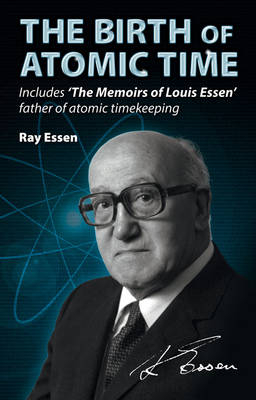
The Birth of Atomic Time
Seiten
2015
Upfront Publishing (Verlag)
978-1-78456-167-3 (ISBN)
Upfront Publishing (Verlag)
978-1-78456-167-3 (ISBN)
- Titel ist leider vergriffen;
keine Neuauflage - Artikel merken
Atomic clocks are increasingly being used for a wide range of everyday applications and technologies such as satellite navigation, the internet, smartphones and wireless communications would be impossible without them. It was a British physicist, Louis Essen, who built the first practical atomic clock in 1955.
Atomic clocks are increasingly being used for a wide range of everyday applications and technologies such as satellite navigation, the internet, smartphones and wireless communications would be impossible without them. But the idea of building an ultra-precise clock - regulated by the behaviour of individual atoms - goes back a long way. Although there were several attempts to make an atomic clock in America after the Second World War, it was a British physicist, Louis Essen, who built the first practical atomic clock in 1955. The author explains why the measurement of time had become so important to the two Superpowers during the Cold War and how scientists in the United States and the Soviet Union turned to Britain in the 1950s for the secrets of the atomic clock that would help them solve the urgent problem of finding a method of long-range navigation for aircraft, ships and submarines. The Birth of Atomic Time is a highly readable book that describes the life and work of Louis Essen (1908-1997) and the race to build the first atomic clock. "Louis Essen's ground-breaking work led to a revolution in timekeeping and one that is still developing.
It is a pleasure to recommend this fascinating book" - Sir Arnold Wolfendale, 14th Astronomer Royal. The author has written extensively about the history of time measurement and the achievements of Louis Essen whose memoir forms part of this book. Using hitherto unpublished material from leading horologists in the US, Russia, Switzerland and the UK, the author has pieced together the fascinating story of atomic timekeeping. 202 pages, 60 illustrations.
Atomic clocks are increasingly being used for a wide range of everyday applications and technologies such as satellite navigation, the internet, smartphones and wireless communications would be impossible without them. But the idea of building an ultra-precise clock - regulated by the behaviour of individual atoms - goes back a long way. Although there were several attempts to make an atomic clock in America after the Second World War, it was a British physicist, Louis Essen, who built the first practical atomic clock in 1955. The author explains why the measurement of time had become so important to the two Superpowers during the Cold War and how scientists in the United States and the Soviet Union turned to Britain in the 1950s for the secrets of the atomic clock that would help them solve the urgent problem of finding a method of long-range navigation for aircraft, ships and submarines. The Birth of Atomic Time is a highly readable book that describes the life and work of Louis Essen (1908-1997) and the race to build the first atomic clock. "Louis Essen's ground-breaking work led to a revolution in timekeeping and one that is still developing.
It is a pleasure to recommend this fascinating book" - Sir Arnold Wolfendale, 14th Astronomer Royal. The author has written extensively about the history of time measurement and the achievements of Louis Essen whose memoir forms part of this book. Using hitherto unpublished material from leading horologists in the US, Russia, Switzerland and the UK, the author has pieced together the fascinating story of atomic timekeeping. 202 pages, 60 illustrations.
| Erscheint lt. Verlag | 12.3.2015 |
|---|---|
| Verlagsort | Leicester |
| Sprache | englisch |
| Maße | 138 x 216 mm |
| Themenwelt | Geschichte ► Hilfswissenschaften ► Chronologie |
| Naturwissenschaften ► Physik / Astronomie ► Astronomie / Astrophysik | |
| Naturwissenschaften ► Physik / Astronomie ► Atom- / Kern- / Molekularphysik | |
| ISBN-10 | 1-78456-167-3 / 1784561673 |
| ISBN-13 | 978-1-78456-167-3 / 9781784561673 |
| Zustand | Neuware |
| Informationen gemäß Produktsicherheitsverordnung (GPSR) | |
| Haben Sie eine Frage zum Produkt? |
Mehr entdecken
aus dem Bereich
aus dem Bereich
Buch | Hardcover (2024)
John Wiley & Sons Inc (Verlag)
139,95 €

